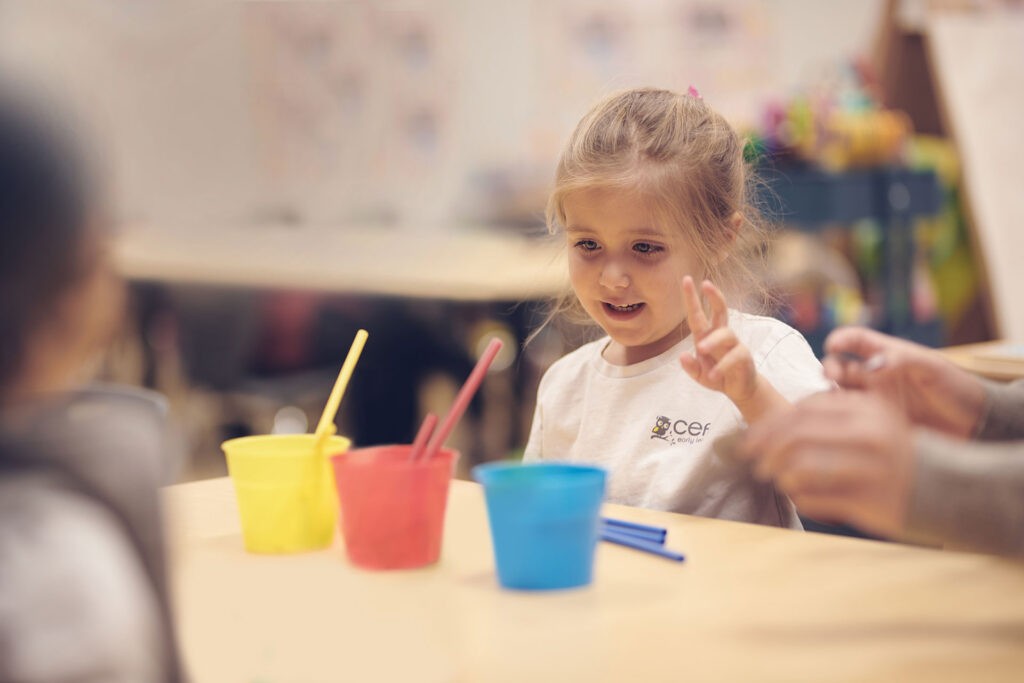As parents, we want to do everything we can to encourage our children to build their skills and experience the world. Children exposed to STEM (Science, Technology, Engineering, and Math) early in life are often ahead of their peers in grade school.
In the article, we’ll discuss the importance of STEM learning outcomes for children under five years of age and share seven ways to incorporate STEM projects for kids into your child’s life through various learning styles and home teaching methods.
What is STEM education and why is it important?
Engaging your children in STEM activities in their first five years can give them the foundation for future academic and social success. It’s a fun and educational way to explore the world around them.
STEM activities for preschoolers have many outcomes, including:
- Boosting memory retention
- Building problem-solving skills
- Encouraging creativity
- Strengthening language skills
- Practicing social skills
- Teaching the foundation for learning
- New skills in all areas of life.
Through STEM activities for kindergarten children, early learners learn to apply these foundational concepts about the world around them to their everyday lives. It piques their curiosity and creativity and helps them make connections between concepts, objects, and ideas. They learn to work with others to test, hypothesize, repeat, and optimize to find the answers or solutions they seek.
The brain science of STEM for early learners
From a neuroscience perspective, we know that between the ages of 0 and five is a time of rapid brain development in children. It’s when they build neurological connections in their brain which help them form the core skills and knowledge they will need throughout their lives.
A 2022 paper points to the importance trusted organizations like UNESCO and IDOS place in STEM education for children:
“With the increasing focus on the positive benefits of high-quality early childhood education [15], STEM had been identified as contributing significantly to children’s later achievement in STEM knowledge and skills [16]. With international interest in STEM increasing significantly in recent years, groups such as UNESCO and IDOS endorse the critical role of STEM education in the development of a sustainable future of all nations.”
That’s why we teach age-appropriate STEM programs at CEFA. We’ve seen firsthand how children who develop these skills and knowledge early in life thrive into successful adults, no matter the path they choose.
Now that we know the importance of STEM learning outcomes for children under 5, here are some simple STEM activities you can do with your children at home:
1. Build something together.
Promote the engineering, science, education and creativity parts of the brain by building something together. Bring your recycle box of cardboard, plastic bottles, and old lids to the patio along with tape, glue, crayons, and other building and decoration supplies you have on hand. Let them freely build, or give them a challenge: “Sherri, build a cool boat to float in our pool.”
Building activities are both creative and challenging. They can be adapted to the skill level and age of your child.
2. Cook a meal or treat together.
Children love to imitate their parents and are likely already asking to help you cook in the kitchen. Get their help when cooking a special meal.
Read the instructions out loud to them as you do them. Get them to help pour ingredients and stir. Kinesthetic learners prefer these kinds of hands-on activities.
Cooking together helps them learn cooking skills and how they can combine different objects to make something new.
3. Go for a nature walk.
The current generation of children under five has lived most of their lives in a pandemic, unable to safely and freely explore their world like generations before them. Now is the time to take them outdoors again to explore. Take your little visual learner for a nature walk in the forest or even a walk around the neighbourhood. Ask them to look for objects of different colours, textures, or shapes: “Tobias, can you find a red circle in this store?”
Fresh air does the brain good. Stem activities encourage children to explore their world safely and learn to recognize the objects around them to build their observational skills, vocabulary, and communication skills.

4. Play with different mediums.
Children love to touch everything! Give them a sensory bucket or area where they can touch and interact with different textures and objects. Encourage your tactile learner to use these objects to build new things.
Children are keen explorers, and encouraging them to explore this way helps them learn more about their world and the relationships between objects.
5. Encourage counting in their everyday life.
Building a mathematical foundation isn’t necessarily about quizzing them on their addition or times tables. Look for opportunities for your children to practice numbers, basic math, and counting in real life. Take them to a zoo and ask them to count aloud all the zebras they see. Or, give them a small bowl of chocolate chips or mini-marshmallows and ask them to count them as you add or remove more objects.
These activities appeal to auditory learners and help children learn their numbers, so when they begin math in school, they already have a foundation and know their numbers.

6. Hypothesize and experiment.
Look for opportunities for children to make guesses (hypothesize) and test. For example, go for a walk to a creek or beach. Pick up objects like leaves and rocks, and ask your child to guess if they will sink or float. You can also put an ice cube on the sidewalk and then time how long it will take to melt.
These activities help children use their knowledge of the world to make guesses and see if they’re right.
7. Gamify STEM learning.
Children can combine play with learning and potentially retain more knowledge when they learn new concepts through play. This learning method is beneficial because children can observe how the concepts apply in real life.
Look for ways to gamify the STEM learning method. For example, do a scavenger hunt where children have to collect specific numbers of items on a trail or build paper airplanes and then race them down the stairs as you teach them why certain planes flew better than others.
STEM questions to ask young children
You can also ask children various STEM-related questions and have them discuss, draw, or create their answers. For example, you could ask a child why a piece of paper blows easily in the wind, but a pebble does not:
- For the visual learners, go outside and show them a paper blowing in the wind and a rock that doesn’t.
- For the auditory learners, ask them to tell you what they think.
- For the kinesthetic or tactile learners, ask the child to find different objects around the house to see how (or if) the wind moves them.
Here are some other fun questions you can explore with your young learner:
- Why does the wind blow paper away, but a rock stays still?
- How can we keep a tall block tower from falling over when it gets too high?
- How does the water flow quickly in some spots but slower in others?
- Why does this object sink when this other one floats?
In early childhood learning environments, we often ask STEM questions like these in group settings. It’s fun to listen to the children listen to each other and build upon what someone else said while working together to learn the topic.
STEM learning at CEFA
STEM activities are a big part of the CEFA curriculum. We often incorporate this learning into active, exploratory, and creative opportunities. These are accompanied by group discussions and other reading, writing, visual, and auditory learning styles. Children love to explore their world through play, and these individual learning styles help the concepts stick in their brains better (with repetition too, of course).
We introduce STEM concepts through group activities, individual exploration, and interaction with real-life objects and situations. Learn more about the CEFA and STEM learning outcomes.
